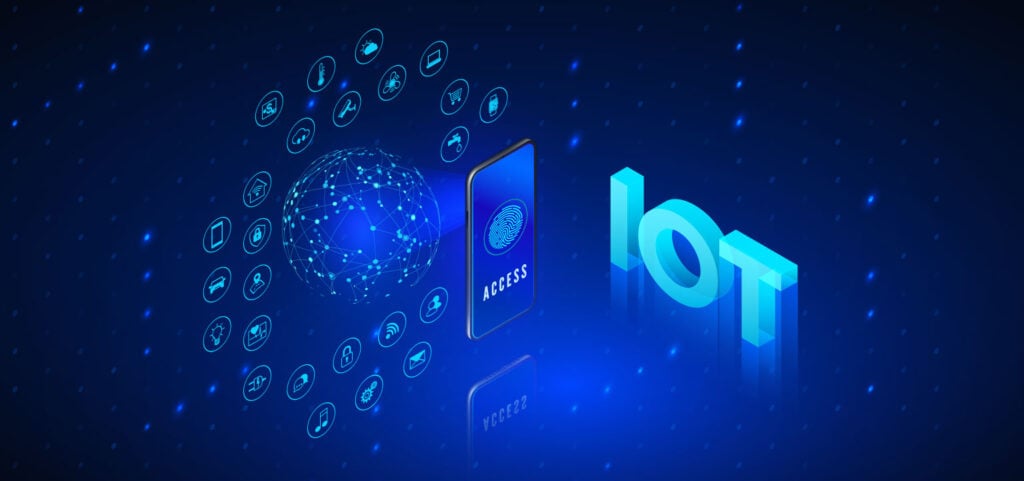Internet Of Things Security Risks, a crucial topic in today’s digital landscape, delves into the vulnerabilities and consequences associated with IoT devices. This research-style exploration uncovers the various risks and offers insights into mitigating them effectively.
Internet of Things (IoT) security risks refer to the vulnerabilities and threats associated with the interconnected network of devices that communicate and exchange data over the internet. These risks can range from unauthorized access to sensitive information, data breaches, malware attacks, to physical safety concerns.
Addressing IoT security risks is crucial due to the increasing adoption of IoT devices in both residential and commercial settings. With the proliferation of connected devices, the potential attack surface for cybercriminals also expands, making it essential to safeguard these devices and the data they collect and transmit.
Individuals and businesses can be impacted by IoT security risks in various ways. For individuals, privacy breaches can occur if personal information stored on IoT devices is compromised. Moreover, unauthorized access to smart home devices can lead to safety risks and intrusions into personal space. On the other hand, businesses face financial losses, reputational damage, and operational disruptions in case of IoT security breaches. Additionally, the compromise of critical infrastructure and industrial IoT systems can have far-reaching consequences for society as a whole.
Common Types
IoT devices are susceptible to various security risks that can compromise the privacy and safety of users. Understanding the common types of IoT security risks is crucial to mitigate potential threats and protect sensitive information.
Data Breaches
Data breaches are one of the most common IoT security risks, where unauthorized individuals gain access to confidential data stored on IoT devices. For example, in 2019, a data breach involving a popular smart home security system exposed the personal information of over 2.4 million users. This breach compromised sensitive data such as email addresses, passwords, and device information, highlighting the vulnerability of IoT devices to cyber attacks.
Unauthorized Access
Unauthorized access occurs when hackers exploit security vulnerabilities in IoT devices to gain control and manipulate their functions. In a notable incident, hackers accessed a casino’s high-roller database through a smart thermometer in the lobby’s fish tank. By infiltrating the IoT device, hackers obtained unauthorized access to the casino’s network, highlighting the potential consequences of inadequate IoT security measures.
Denial of Service (DoS) Attacks
Denial of Service (DoS) attacks target IoT devices by overwhelming them with traffic, causing them to become unresponsive or crash. In 2016, a massive IoT botnet attack disrupted major websites and services by targeting vulnerable IoT devices such as cameras and routers. This incident underscored the importance of securing IoT devices against DoS attacks to prevent widespread disruptions.
Device Hijacking, Internet
Device hijacking occurs when cybercriminals take control of IoT devices to carry out malicious activities. For instance, hackers can hijack smart home devices to spy on users, steal personal information, or launch further cyber attacks. The growing interconnectedness of IoT devices makes them susceptible to hijacking, emphasizing the need for robust security measures to prevent unauthorized access.
Privacy Violations
Privacy violations are a significant concern with IoT devices, as they collect and transmit vast amounts of personal data. In a high-profile case, smart toys equipped with microphones and cameras were found to record children’s conversations and store them insecurely. This breach of privacy raised serious ethical and legal questions regarding the protection of sensitive data captured by IoT devices.

Vulnerabilities
IoT devices are susceptible to various vulnerabilities that can be exploited by malicious actors, putting both user privacy and security at risk. These vulnerabilities can range from insecure communication protocols to weak authentication mechanisms, making IoT devices an attractive target for cyberattacks.
Insecure Communication Protocols
One common vulnerability in IoT devices is the use of insecure communication protocols, such as HTTP instead of HTTPS. This makes it easier for attackers to intercept sensitive data being transmitted between the device and the server, leading to potential data breaches and privacy violations.
Weak Authentication Mechanisms
Another critical vulnerability in IoT devices is the implementation of weak authentication mechanisms, such as default passwords that are rarely changed by users. This allows attackers to easily gain unauthorized access to the device, compromising the entire network and enabling them to launch further attacks.
Lack of Security Updates
Many IoT devices lack regular security updates and patches, leaving them vulnerable to known exploits and vulnerabilities. Without timely updates, attackers can exploit these weaknesses to gain control of the device or launch attacks on other connected devices in the network.
Example of Exploited Vulnerabilities
One notable example of IoT device vulnerabilities being exploited is the Mirai botnet attack in 2016. The Mirai malware targeted insecure IoT devices with weak passwords, recruiting them into a massive botnet to launch DDoS attacks on critical internet infrastructure. This incident highlighted the importance of securing IoT devices to prevent large-scale cyberattacks.
IoT devices have the potential to collect vast amounts of personal data, ranging from daily routines to sensitive information. As these devices become more integrated into our lives, the risks to privacy also increase. It is crucial to understand how IoT security risks can impact user privacy and the potential consequences of privacy breaches in IoT ecosystems.
Privacy Breaches in IoT Ecosystems
Privacy breaches in IoT ecosystems can have severe consequences for individuals and organizations. When unauthorized parties gain access to sensitive data collected by IoT devices, they can exploit this information for malicious purposes. Personal details, such as location data, health records, and financial information, can be compromised, leading to identity theft, fraud, and other privacy violations. Moreover, the interconnected nature of IoT systems means that a breach in one device can potentially compromise the entire network, amplifying the impact of the security risk.
Protecting Privacy in the IoT Environment
To protect their privacy in the IoT environment, individuals can take several proactive measures. Firstly, it is essential to regularly update the firmware and software of IoT devices to patch any known vulnerabilities. Additionally, users should change default passwords to unique and strong ones to prevent unauthorized access. Implementing encryption for data transmission and storage can also enhance privacy protection. Furthermore, individuals should be cautious about sharing personal information with IoT devices and consider the implications of data collection practices by device manufacturers. By being vigilant and informed about privacy risks, users can mitigate the impact of IoT security threats on their personal information.
Best Practices for Mitigating IoT Security Risks
IoT security risks can pose significant threats to both individuals and organizations. Implementing best practices is crucial to minimize these risks and safeguard sensitive data and privacy.
Regularly Update IoT Devices with Security Patches
Keeping IoT devices up to date with the latest security patches is essential to protect against known vulnerabilities. Manufacturers frequently release security updates to address identified flaws and enhance the overall security posture of their devices. Failing to apply these patches promptly can leave devices exposed to potential cyberattacks.
Implement Strong Authentication Mechanisms
Utilizing strong authentication mechanisms, such as multi-factor authentication, can add an extra layer of security to IoT devices and networks. By requiring users to provide multiple forms of verification before accessing the system, organizations can significantly reduce the risk of unauthorized access and data breaches.
Segment IoT Networks
Segmenting IoT networks from critical business systems can help contain potential security breaches and limit the impact of a cyberattack. By creating separate network segments for IoT devices, organizations can prevent unauthorized access to sensitive data and reduce the attack surface for malicious actors.
Encrypt Data in Transit and at Rest
Encrypting data both in transit and at rest is essential to protect sensitive information from interception and unauthorized access. By implementing robust encryption protocols, organizations can ensure that data remains secure as it travels between IoT devices and backend systems, as well as when stored on servers or in the cloud.
Monitor IoT Devices for Anomalies
Regularly monitoring IoT devices for unusual behavior or anomalies can help detect potential security incidents early and mitigate their impact. By leveraging intrusion detection systems and security monitoring tools, organizations can proactively identify and respond to security threats before they escalate into full-blown attacks.
Educate Users on IoT Security Best Practices
Educating users about IoT security best practices and potential risks can help raise awareness and foster a culture of cybersecurity within organizations. By providing training on how to securely configure and use IoT devices, individuals can play a crucial role in safeguarding sensitive data and preventing security breaches.
In conclusion, Internet Of Things Security Risks pose significant challenges to individuals and businesses alike.









